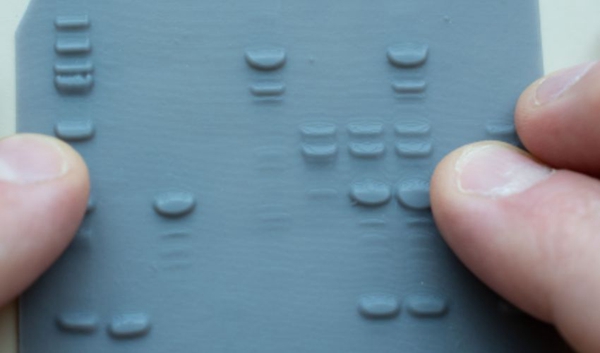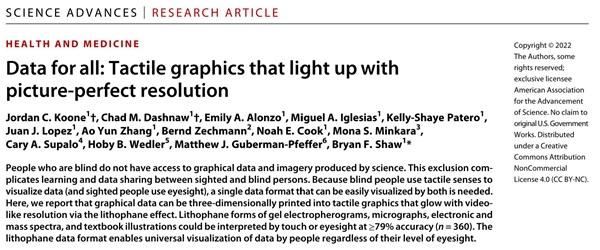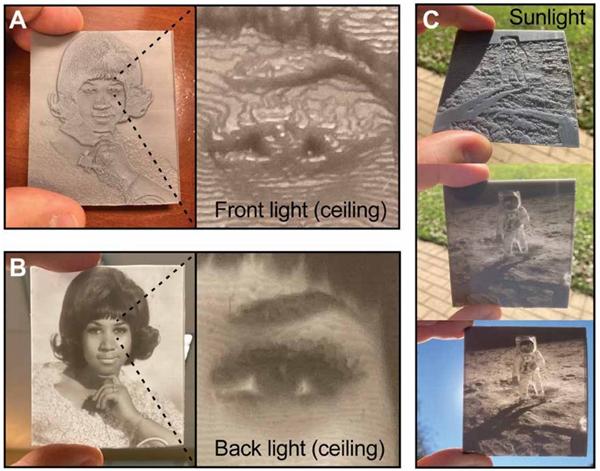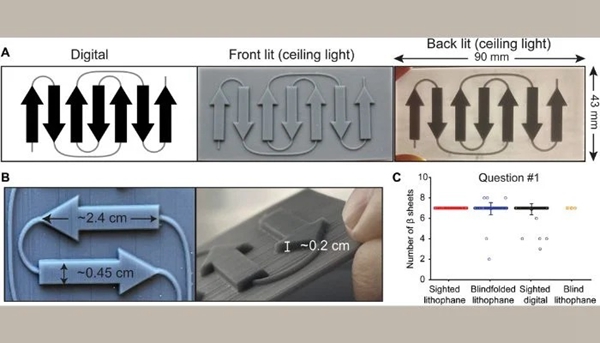Introduction: How to better create accessibility has been a hot topic in academia, especially for those in society with various disabilities who are often entitled to certain accommodations that easily enable them to work or study at the same level. However, despite the fact that targeted accommodations are already in place, even the minimum requirements are not met in many places that are far from normalising the lives of people with disabilities.

On August 27, 2022, a Baylor University study showed that by translating scientific data into tactile graphics through3D printing, scientists will be able to remove the barriers that keep blind people excluded from chemical education. The Baylor study, entitled "Data for all: Tactile graphics that light up with picture-perfectresolution", was published in Science Adv. The paper was published in the journal Science Advances.

Link to related paper: https://www.science.org/doi/10.1126/sciadv.abq2640
In this study, Baylor researchers used 3D printing technology to turn two-dimensional images (from data) into 3D printed lithographs, making them tactile and thus accessible to all. Lithographs are an ancient art medium that arose in China as early as the sixth century and became popular in Europe in the 19th century. Essentially, they are thin prints made of translucent materials that initially appear opaque but glow when illuminated by a light source. The scattering of light causes thinner areas to appear brighter and thicker areas to appear darker. This research marks the first time it has been used in the scientific field and, when combined with 3D printing, produces these graphics that allow individuals to visualise the same piece of data universally.


△ A representation of the steps from a digital representation of the data to a printed lithograph to the results for all participants (Image credit: Baylor University)
Dr Bryan Shaw, corresponding author of the study and professor of chemistry and biochemistry, explained: "This study is an example of how art makes science more accessible and inclusive. Scientific data and images, such as the stunning images coming out of the new Webb telescope, are inaccessible to the blind. However, our research shows that thin, translucent tactile graphics, called lithophanes, can make all these images accessible to everyone, regardless of vision."
New research to help blind community
In the Baylor University study, both blind and sighted people were required to interpret the results of the lithophanes data by touch or sight. The results showed an overall accuracy rate of about 79 per cent for the testers, but even higher when it came to the blind participants in the study. The average test accuracy for blind people interpreting the five slates by touch was 96.7%, and the accuracy for sighted interpretation of the backlit slates was even 92.2%. Meanwhile, for sighted test participants who were blindfolded, their tactile interpretation score was 79.8%, lower than that of blind participants, but still impressive.
Not only were the sighted participants able to interpret the data accurately, but the tactile accuracy of the blind participants was at least as good as, if not better than, the visual interpretation. The lithographic prints were able to be made with a small commercial 3D printer, namely Formlabs' Form3B+ printer. It is the use of resin 3D printing that enables the high accuracy and visual accuracy of the data. With resin 3D printing, each stone tablet is printed at a resolution of 100 microns, using a grey photographic resin, thus providing an accurate message for interpretation by blind participants. The choice of 3D printing was also cost effective: the printer was less than $5,000, making the project relatively easy to replicate at other universities.
Dashnaw concludes: "Most of the research I do every day will not have a significant impact on the scientific community. However, the 3D printed lithograph project will make a real difference. We are making STEM more accessible to the visually impaired and calling attention to their overall exclusion."







